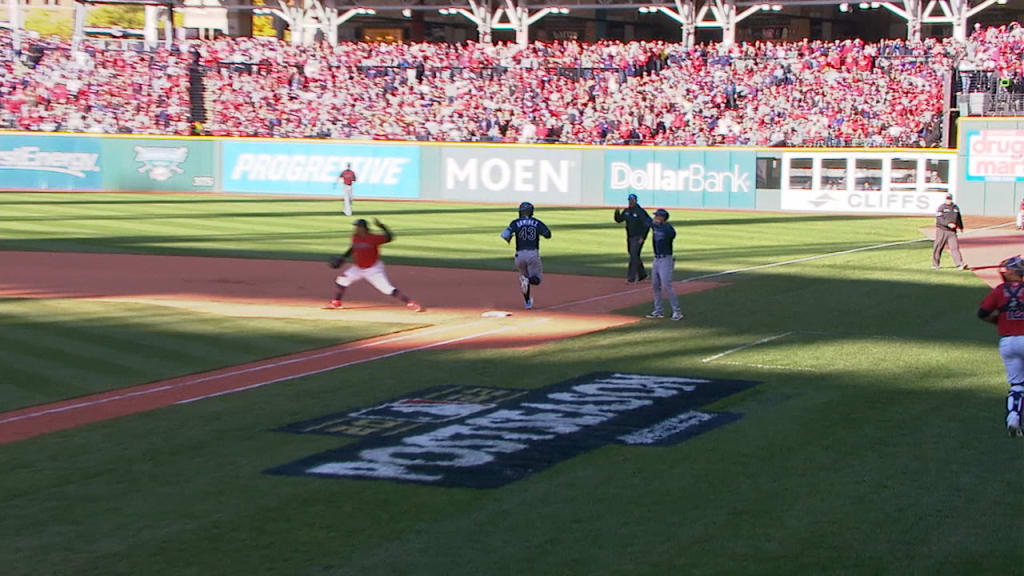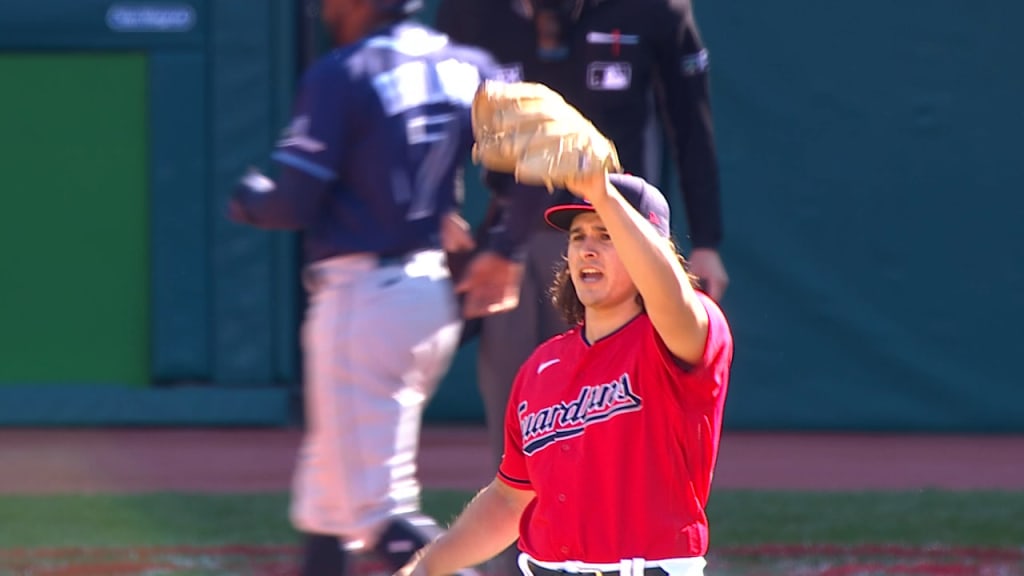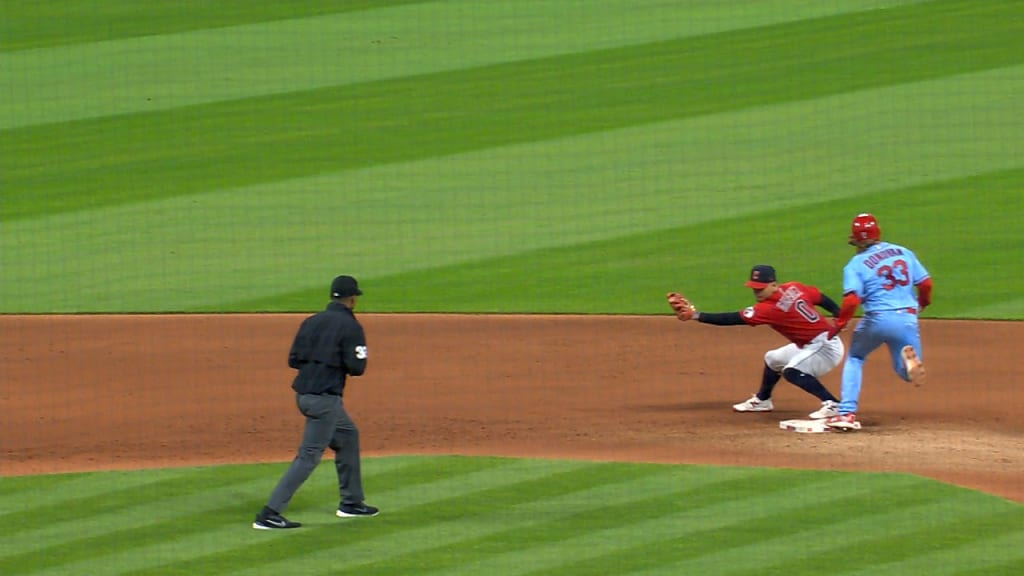'Flame on': How starters tackle a move to the 'pen
This browser does not support the video element.
When Sam Hentges and Eli Morgan joined forces in the Cleveland Guardians bullpen at the start of the 2022 season, they joked that they were the “failed starters” of the bunch.
The year prior, both had brief auditions in Cleveland’s starting rotation, but both finished the season with ERAs above 5.00. But with the Guardians needing bullpen help, Hentges and Morgan began their transition from the rotation to the ‘pen.
The idea of having a “failed starter” in the bullpen isn’t unique to the Guardians. In fact, take one look around MLB bullpens and you’ll find that the vast majority of pitchers transitioned from starter to reliever at some point after entering pro ball, whether that was in the Minors, upon reaching the Majors or sometime later in their careers. The switch can come due to injury, ineffectiveness or a plethora of other reasons.
For some, that transition to the bullpen never clicks, but for others, it’s the start of a new chapter that can lead to years of Major League success. So how do pitchers approach this challenge, and what obstacles do they face? Here is a look inside that process from those who have tackled it.
This browser does not support the video element.
Training day
By the time a pitcher moves to the bullpen, he has likely spent years following a particular schedule as a starter: A day after the start, you rest. Then you play catch, then throw a bullpen, then do your individualized workouts to prepare yourself for your next start.
For relievers, though, workouts are all about developing a daily routine to stay fresh for every game. A successful adoption of this altered routine can be the thing that makes or breaks bullpen success.
“[The biggest thing] is just helping them understand that they can get ready quicker than they’re used to doing things like playing catch with the outfielders during the game or working with weighted balls,” Guardians pitching coach Carl Willis said.
When Hentges was a starter, he said he felt that he could “blow it out” in the weight room between starts because he knew that he had time to rest in between appearances. Now he’s adjusted his workout routine so he’s ready to go every day and credited veteran Bryan Shaw for helping the club’s young relievers, saying that his former Cleveland teammate “showed a lot of us the ropes last year.”
This browser does not support the video element.
That change in preparation also translates into the physical bullpen as well. During the 2021 and ‘22 seasons, then-Guardians bullpen coach Brian Sweeney ran an experiment in the home bullpen at Progressive Field. Every time the bullpen phone rang and a reliever got ready, Sweeney would start his stopwatch and keep track of the amount of time and pitches it took for his relievers to get ready.
With so many converted starters like Morgan and Hentges in the bullpen, Sweeney wanted to provide them as much data as possible to demonstrate the importance of getting ready efficiently so as to not “burn too many bullets.” And, by the end of the 2022 season, he had that data: It took Cleveland’s relievers an average of eight pitches and 192 seconds (a little over 3 minutes) to get ready.
“When starters first come into the bullpen, you’ll see them throw 25-30 pitches which is way too many,” said Sweeney, who is in his first year as the Royals' pitching coach. “That’s unsustainable over the course of a season.”
Mind games
The mental challenge of the transition between the rotation and bullpen is just as important, if not more. And there’s perhaps no pitcher in today’s game who has more experience with it than the Dodgers’ Ryan Yarbrough. The veteran left-hander, who has both a complete game and a save in his career, has started 66 of 146 MLB appearances, and spent the past seven seasons doing a little bit of everything for the Rays, Royals and Dodgers.
This browser does not support the video element.
“I think you just have to treat it as doing your job and getting outs,” Yarbrough said when asked what’s allowed him to have success. “I just stick to that mentality whether I'm a starter, reliever or whatever. They kind of let me know in advance when and how I’ll be used, but at the same time you’ve got to be available.”
Much like how pitchers have to change the way they train to be ready daily, converted starters also need to adjust their mentality. When you’re a starter, you have four days to think about adjustments needed from your last outing. As a reliever, you sometimes have less than 24 hours to put your previous outing behind you and prepare for your next one.
“Learning how to flush bad outings was super important,” said Padres reliever Scott Barlow, a longtime Minor League starter who has now made nearly 300 big league appearances, all in relief. “So much of your success in the bullpen is based around your mindset.”
This browser does not support the video element.
That ability to flush bad outings was one of the first things that Dodgers reliever Gus Varland found himself enjoying about the bullpen. For Varland’s first three seasons in the Minor Leagues, he was nearly a full-time starter with the A’s and Dodgers. But he switched roles while at Double-A in 2022 and this year broke into the Majors as a Rule 5 Draft pick with the Brewers, before being returned to Los Angeles.
“I didn’t care about my role so long as I made MLB. I’d be the batboy,” said Varland, who made his Dodgers debut on Aug. 16.
When Varland was a starter, he made it his personal goal to go at least five innings so he could help save the bullpen. Now he’s experiencing the other end of the spectrum.
“Now I know what it's like to have to eat innings and then go out and pitch the next day,” he said.
‘Be as nasty as you can’
When you’re a starting pitcher, your job the first time through the order is to dance around a lineup, never giving away too much in one at-bat -- a strategy that goes out the window the minute you move into the bullpen. Fastball velocity can play up, and pitchers can lean more heavily on their most effective offerings.
“As a reliever you need to go out and attack with your best stuff, but when you’re a starter you kind of nibble a little bit more and don’t show the hitter the same sequence or pitches because you’re going to face him again,” Hentges said. “You don’t want to get beat on your third-best pitch when you’re in the bullpen.”
Varland compared the process to the Fantastic 4’s Human Torch turning on his power: Flame on.
“You come in for one or two innings, throw smoke and do it the next day,” he said.
This browser does not support the video element.
During Barlow’s tenure as a Minor League starter, he had a fastball that sat around 89-90 mph as he attempted to operate on “cruise control” to get deep into games. He was able to add some velocity to his fastball in the bullpen, with his four-seamer averaging as high as 95.3 mph in 2021 before dipping over the past couple of seasons. Perhaps more importantly, though, the transition to the bullpen allowed for him to focus on his breaking stuff, which increased their effectiveness.
“You just want to be as nasty as you can, especially with breaking balls,” said Barlow, who now throws his curveball and slider more than 70% of the time combined. “There are some times where you just need to rip a curveball as hard as you can. Going to the bullpen really helped my offspeed stuff get better.”
There is no one formula that works for every pitcher, with the approach depending on their individual strengths. Morgan, for example, began relying more on his four-seam fastball and changeup when the Guardians pushed him to the bullpen, with both pitches gaining effectiveness in that role.
“It’s all about identifying what pitches you want to lean on because they’re going to play up a little,” Willis said. “You can afford to exert yourself a little more and use certain pitches more.”
In the 2022 postseason, Hentges and Morgan -- the "failed starters" -- were a part of a Cleveland bullpen that threw 19 scoreless innings between the American League Wild Card Series and Division Series. While it wasn’t the way either of them expected to be helping Cleveland when they were drafted, it was a tangible example of the growth they’d gone through to become successful bullpen arms.
“I didn’t think I'd enjoy it as much as I did,” Hentges said. “It’s a role where you have to be aggressive every day. The starter sets the tone, and it’s on you to keep that going.”


